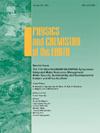评估可持续水体在城市排水系统中缓解城市洪涝灾害的作用:印度哈里亚纳邦古尔冈案例研究
IF 3
3区 地球科学
Q2 GEOSCIENCES, MULTIDISCIPLINARY
引用次数: 0
摘要
过去 5 年来,由于非法侵占当地水体、排水系统不完善以及降雨量不断增加,印度古尔冈市一直面临着城市内涝问题。在这项研究中,我们利用遥感数据,使用偏最小平方回归法确定了最易受洪水侵袭的区域,并建议新建 18 个蓄水池,以便在空地和荒地上建立可持续排水系统 (SuDS)。在 SWMM 中,使用 PERSIANN-CSS 每小时降雨数据(全年降雨事件)中的 24 小时降雨滞后图和 IMERG 全球降雨数据(半小时极端降雨事件)中 2000 年至 2023 年的 7 小时降雨滞后图模拟了城市排水系统(UDS)模型。在对 SWMM 中的 UDS 和 SuDS 进行比较后发现,洪水量已从 240 CMS 大幅降至 180 CMS(年降雨量)和 500 CMS 降至 350 CMS(7 小时降雨量预报图)。研究还比较了无链接故障和单链接故障情况下排水系统的结构复原力。在无故障情况下,全年降雨的恢复能力提高了 20%,极端降雨事件的恢复能力提高了 10%。在单链路失效的情况下,水处理系统对全年降雨事件的恢复能力提高了 20-47%,对极端降雨事件的恢复能力提高了 7-30%。因此,这项研究有助于实现可持续发展目标 11 和 13,在古尔冈建设具有抗灾能力和气候适应性的城市排水系统。这项研究为城市规划者和决策者提供了有关城市水体能力的重要见解。本文章由计算机程序翻译,如有差异,请以英文原文为准。
Assessing the role of sustainable water bodies in urban drainage systems to mitigate urban flooding: A case study of Gurgaon, Haryana, India
For the last 5 years, Gurgaon a city in India has been facing an issue of urban flooding due to illicit encroachments over the local waterbodies, poor drainage system and increasing rainfall. In this study, Remote sensing data are employed to find the most flooded areas identified using Partial Least Square Regression and 18 new retention ponds are proposed to build a Sustainable Drainage System (SuDS) in open space and barren lands. In SWMM, the Urban Drainage System (UDS) model is simulated using 24-h rainfall hyetograph from hourly PERSIANN-CSS rainfall data (yearly rainfall events) and 7-h rainfall hyetograph from half-hourly IMERG Global Precipitation Data (extreme rainfall events) from 2000 to 2023. After comparing both UDS and SuDS in SWMM, it is found that the flood volume has decreased significantly from 240 CMS to 180 CMS (for yearly rainfall) and 500 CMS to 350 CMS (7-h rainfall hyetograph). The study also compares the structural resilience of the drainage system under the conditions of no link failure and single link failure scenarios. In no failure situation, 20% more resilience has been achieved for yearly rainfall and 10% more for extreme rainfall events. In single link failure conditions, SuDS is helping to reach 20–47% resilience for yearly rainfall events and 7–30% resilience for extreme rainfall events. Thus, this study helps to achieve SDGs 11 and 13 to build a resilient and climate-adaptive urban drainage in Gurgaon. The study gives significant insights regarding the competency of urban waterbodies to city planners and policymakers.
求助全文
通过发布文献求助,成功后即可免费获取论文全文。
去求助
来源期刊

Physics and Chemistry of the Earth
地学-地球科学综合
CiteScore
5.40
自引率
2.70%
发文量
176
审稿时长
31.6 weeks
期刊介绍:
Physics and Chemistry of the Earth is an international interdisciplinary journal for the rapid publication of collections of refereed communications in separate thematic issues, either stemming from scientific meetings, or, especially compiled for the occasion. There is no restriction on the length of articles published in the journal. Physics and Chemistry of the Earth incorporates the separate Parts A, B and C which existed until the end of 2001.
Please note: the Editors are unable to consider submissions that are not invited or linked to a thematic issue. Please do not submit unsolicited papers.
The journal covers the following subject areas:
-Solid Earth and Geodesy:
(geology, geochemistry, tectonophysics, seismology, volcanology, palaeomagnetism and rock magnetism, electromagnetism and potential fields, marine and environmental geosciences as well as geodesy).
-Hydrology, Oceans and Atmosphere:
(hydrology and water resources research, engineering and management, oceanography and oceanic chemistry, shelf, sea, lake and river sciences, meteorology and atmospheric sciences incl. chemistry as well as climatology and glaciology).
-Solar-Terrestrial and Planetary Science:
(solar, heliospheric and solar-planetary sciences, geology, geophysics and atmospheric sciences of planets, satellites and small bodies as well as cosmochemistry and exobiology).
 求助内容:
求助内容: 应助结果提醒方式:
应助结果提醒方式:


